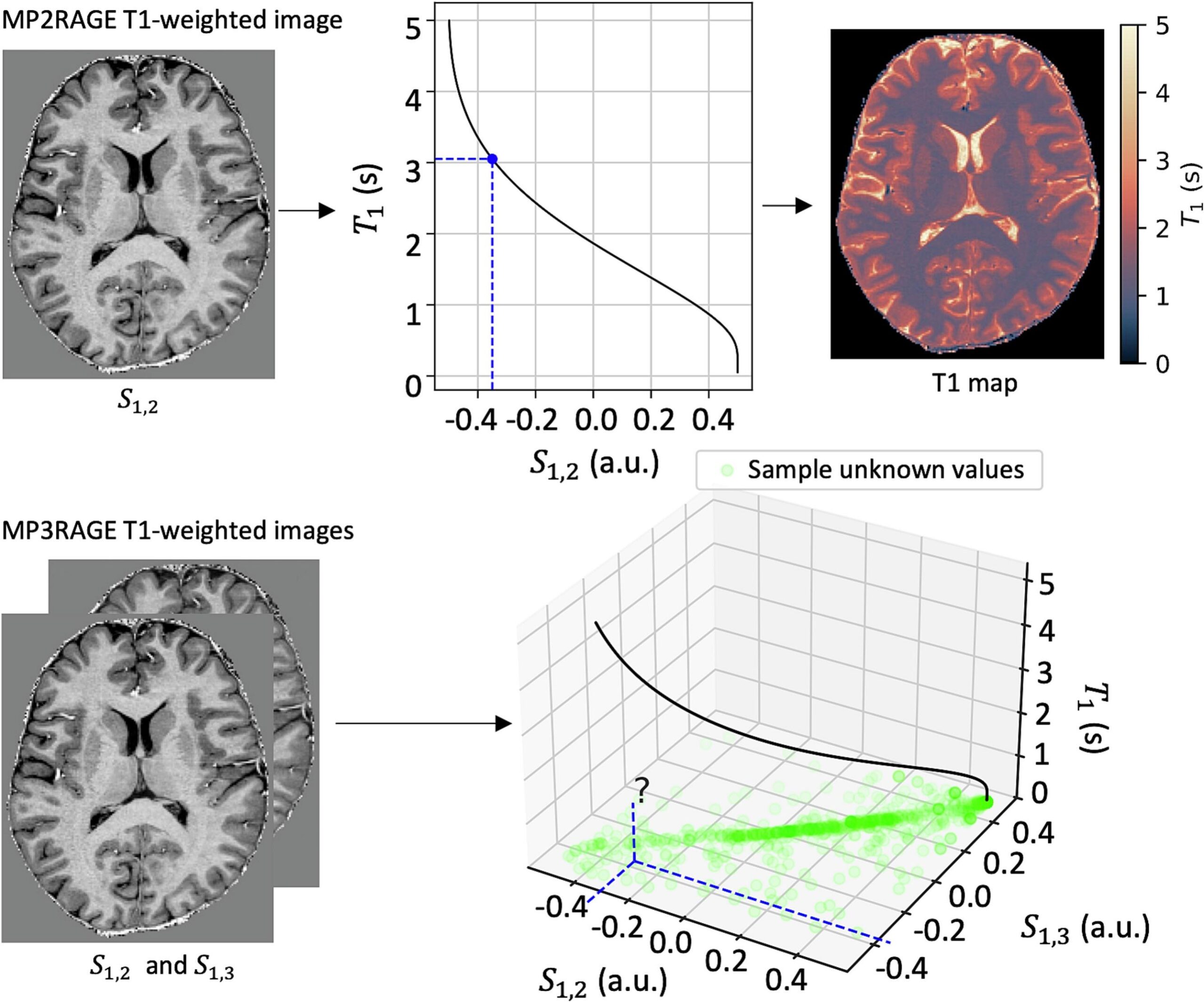Saunders, Adam M.; Kim, Michael E.; Gao, Chenyu; Remedios, Lucas W.; Krishnan, Aravind R.; Schilling, Kurt G.; O’Grady, Kristin P.; Smith, Seth A.; Landman, Bennett A. “Comparison and calibration of MP2RAGE quantitative T1 values to multi-TI inversion recovery T1 values.” Magnetic Resonance Imaging, vol. 117, 2025, 110322, https://doi.org/10.1016/j.mri.2025.110322.
In typical brain scans, T1-weighted magnetic resonance images can be affected by differences in the scanner or the scanning process. However, quantitative T1 mapping is a technique designed to measure T1 values in the brain without being influenced by these factors. Changes in T1 values indicate structural changes in brain tissue. The MP2RAGE protocol is a method for efficient T1 mapping, offering much faster scan times compared to older methods like multi-TI inversion recovery protocols. In this study, we collected data from both MP2RAGE and another protocol, MP3RAGE, for four subjects. We compared the T1 values estimated using MP2RAGE with typical methods and found that the MP2RAGE technique didn’t show any bias but was sensitive to certain imaging issues with the MP3RAGE. We also observed a tissue-dependent difference between the T1 values from MP2RAGE and those from the multi-TI inversion recovery method. To fix this issue, we used a deep learning model called ResNet-18 to calibrate the MP2RAGE T1 values to match those from the multi-TI inversion recovery method. Our model significantly reduced errors in T1 estimation across different brain tissues, improving accuracy. This approach shows that we can use limited training data and neural networks to reduce errors and improve the calibration of brain scans between different imaging methods.
Fig. 1. Quantitative T1 mapping with MP2RAGE consists of creating a T1-weighted MP2RAGE image and then using the MP2RAGE model to find corresponding values of T1. However, this method provides no measures of uncertainty and does not extend to MP3RAGE, where may correspond to a different T1 value than using the MP2RAGE model. Therefore, the model is not directly invertible at all points. We visualize the T1 map using the color mapping recommended by Fuderer et al.
